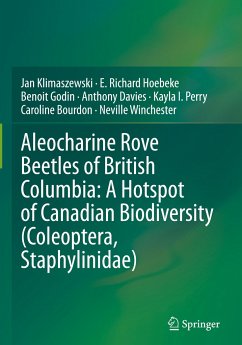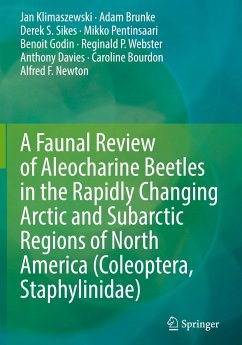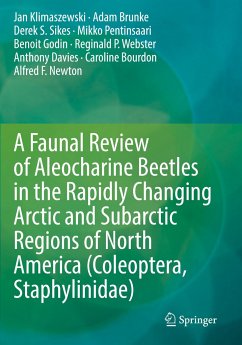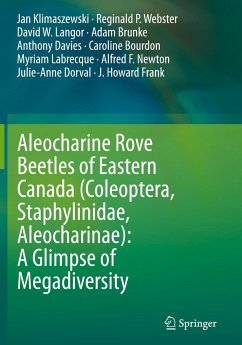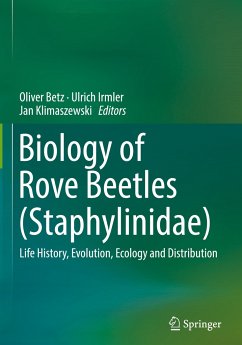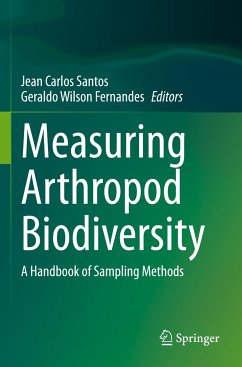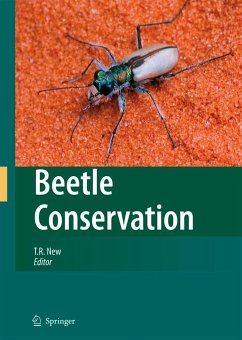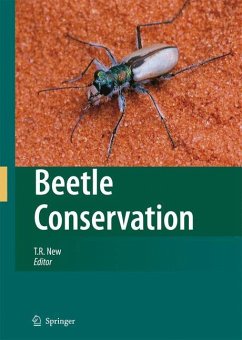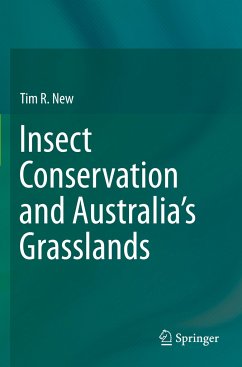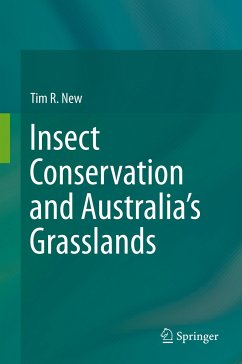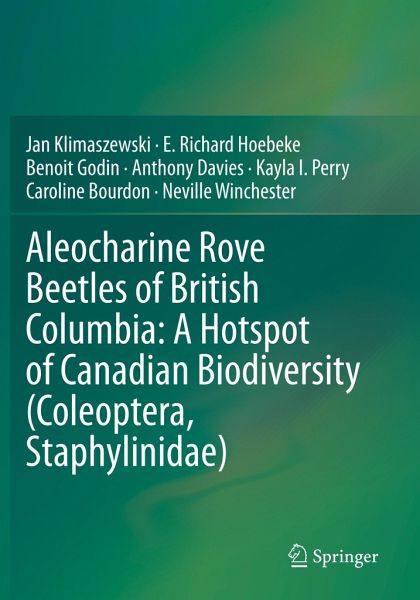
Aleocharine Rove Beetles of British Columbia: A Hotspot of Canadian Biodiversity (Coleoptera, Staphylinidae)
Versandkostenfrei!
Versandfertig in 6-10 Tagen
174,99 €
inkl. MwSt.
Weitere Ausgaben:

PAYBACK Punkte
87 °P sammeln!
Aleocharine beetles are among the most poorly known and difficult-to-identify groups of Coleoptera worldwide. This book presents the first comprehensive synopsis of aleocharine rove beetle species (Coleoptera, Staphylinidae) from British Columbia, Canada. It is important to generate a structured inventory of species in hotspots of biodiversity like British Columbia, to provide baseline biodiversity data for monitoring species responses related to climate change. It is the first book to treat and illustrate every recorded and new species. For every species, color illustrations are provided, inc...
Aleocharine beetles are among the most poorly known and difficult-to-identify groups of Coleoptera worldwide. This book presents the first comprehensive synopsis of aleocharine rove beetle species (Coleoptera, Staphylinidae) from British Columbia, Canada. It is important to generate a structured inventory of species in hotspots of biodiversity like British Columbia, to provide baseline biodiversity data for monitoring species responses related to climate change. It is the first book to treat and illustrate every recorded and new species. For every species, color illustrations are provided, including color habitus and genital diagnostic structures of both sexes. Two hundred and twenty-seven valid species, including 14 new species, 16 new generic records, and 36 (excluding new species) new provincial and 6 state records, in 79 genera and 14 tribes.Tribes and subtribes are arranged in phylogenetic order as it is currently recognized, and genera and subgenera are listed alphabetically within each tribe or subtribe. Species are listed alphabetically or in species groups to better reflect their relationships. Species distribution is listed by provinces and territories in Canada and states in the United States, and the geographic origin of each species is categorized as native, Holarctic, adventive or undetermined (either adventive or Holarctic). Every species is presented with a morphological diagnosis including external and genital characters of both sexes. Collection and habitat data are presented for each species, including collecting period, and collecting methods. A list of all Canadian species with their currently known distribution in North America is presented at the end of the book.



